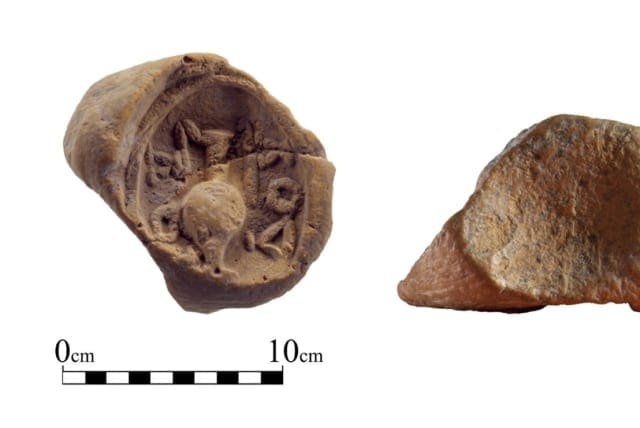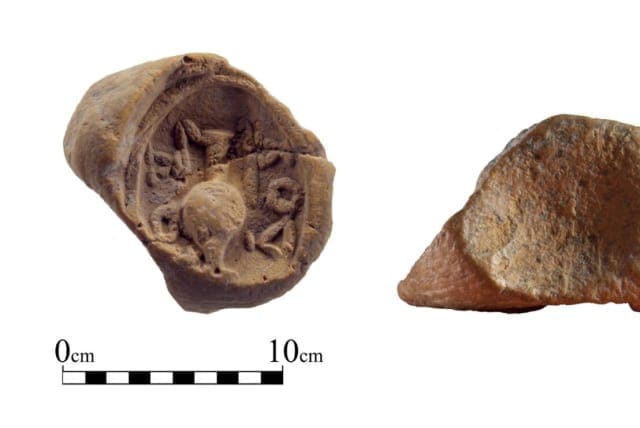Tokens Found in Temple Mount Sifting Project Excavations: Potential Use as Ancient Pilgrims' Offerings
Over a decade ago, the Temple Mount Sifting Project uncovered a miniature clay token with a seal imprint of a wine jar and Greek inscriptions. Shortly after, another comparable token with Aramaic inscriptions was discovered near the Temple Mount. These findings have led to speculation that these tokens served as a currency for offerings made by pilgrims visiting the Temple.
Archaeologists continue to unravel the mystery behind a 2,000-year-old clay token found in 2011. Its distinctive pinched shape suggests it was a token handed to recipients rather than attached to documents or containers. The seal imprint depicts a wine jar dating back to the first century CE. Greek inscriptions surrounding the jar reveal the name "Doulês," possibly referring to its owner. Similar tokens have been found in regions where Jews had settled during the Roman period.

(photo credit: ZACHI DVIRA)
Insights from a similar Aramaic token found under Robinson's Arch indicate that these tokens may have been used by pilgrims to exchange offerings after making payments. The inscriptions on the seal aimed to prevent counterfeits by including details about the sacrifice type, date, month, and the officiating priestly group.
The researcher Dr. Yoav Farhi has analyzed several clay tokens discovered in Jerusalem, including the Temple Mount tokens mentioned above. His study confirmed the Greek inscriptions and examined the tokens' clay composition, revealing similarities between those found in the Jewish Quarter and Temple Mount excavations.
Clay sealings from the Early Roman period are uncommon in Israel, particularly those with a pinched shape. The four tokens studied by Farhi were all found near the Temple Mount and likely pertain to activities conducted within its vicinity.
Numerous questions remain unanswered: Who used these tokens? Who issued them? What was their specific function? Why is a wine jar symbol featured on the Greek-inscribed token? Who was Doulês?
The Temple Mount Sifting Project, launched in 2004, involves the recovery of artifacts from excavated soil illegally dumped in the Kidron Valley. It has yielded over half a million artifacts that provide invaluable insights into the archaeology and history of the Temple Mount. However, the project faces an uncertain future due to the diversion of donor resources to support immediate war-related needs.

